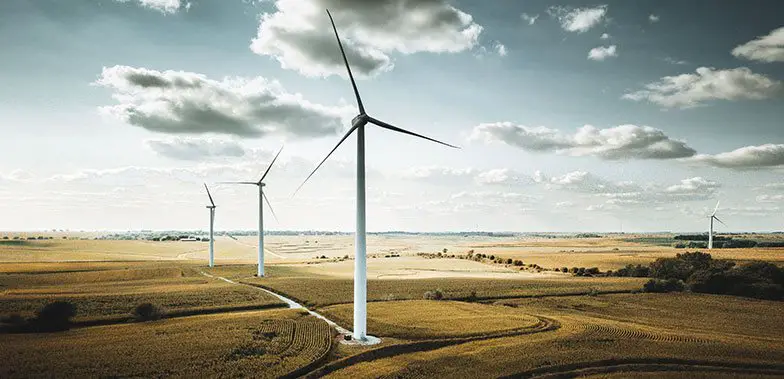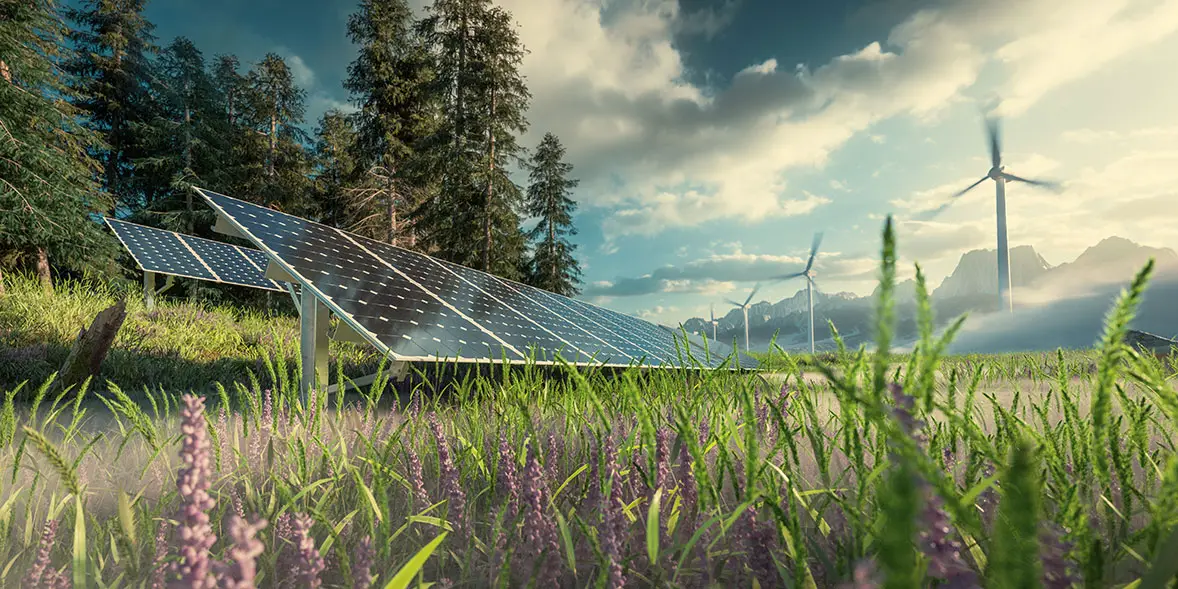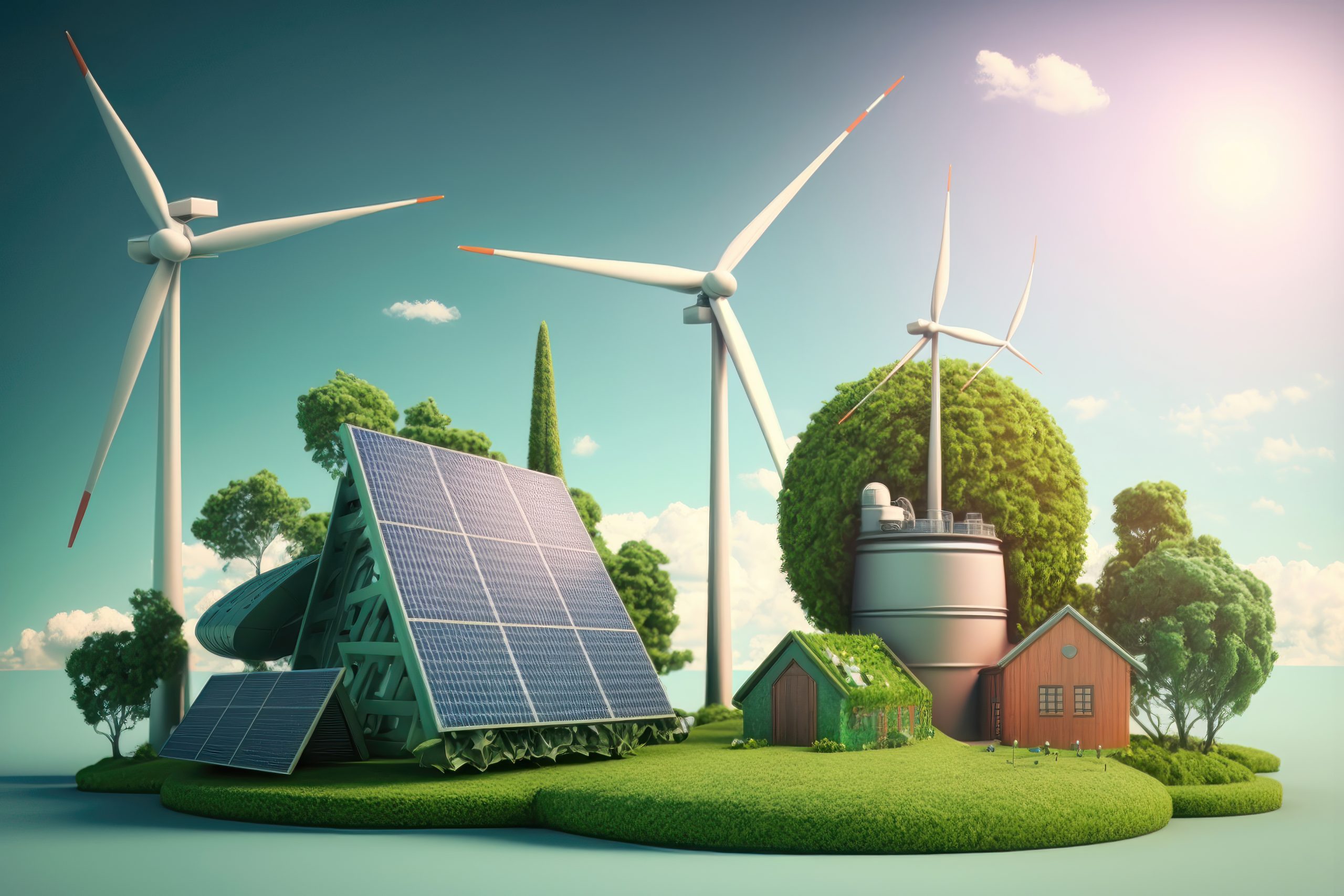Green Energy Technologies: Paving the Sustainable Path to the Future
Introduction:
In the face of accelerating climate change and a growing global demand for energy, the imperative to transition towards sustainable, green energy technologies has never been more pressing. This article explores the landscape of green energy technologies, examining their significance, current state, and potential to revolutionize the way we produce and consume energy. From solar and wind power to emerging innovations, we delve into the diverse array of green energy solutions that hold the promise of a cleaner, more sustainable future.
I. The Urgency of Green Energy:
a. Climate Change and Environmental Impact:
- Significance: The burning of fossil fuels for energy has been a major contributor to the increase in greenhouse gas emissions, exacerbating climate change and environmental degradation. Green energy technologies offer a sustainable alternative to mitigate these impacts.
b. Depleting Fossil Fuel Resources:
- Significance: Finite fossil fuel resources are depleting rapidly, necessitating a shift to renewable and sustainable energy sources. Green energy technologies provide a long-term solution to address the challenge of resource scarcity.
c. Energy Security and Independence:
- Significance: Green energy reduces dependence on imported fossil fuels, enhancing energy security and promoting energy independence for nations. Localized renewable energy sources empower communities to generate power sustainably.
II. Solar Power Technologies:
a. Photovoltaic Solar Cells:
- Technology: Photovoltaic cells convert sunlight directly into electricity. Advances in materials and manufacturing processes have made solar panels more efficient and affordable, driving widespread adoption.
b. Concentrated Solar Power (CSP):
- Technology: CSP systems use mirrors or lenses to concentrate sunlight onto a small area, generating heat that is then converted into electricity. These systems are particularly effective in regions with abundant sunlight.
c. Thin-Film Solar Cells:
- Technology: Thin-film solar cells use lightweight, flexible materials, making them suitable for diverse applications. They offer versatility in design and can be integrated into various surfaces.
d. Solar Tracking Systems:
- Technology: Solar tracking systems orient solar panels to follow the sun’s trajectory, optimizing energy capture throughout the day. This technology enhances the overall efficiency of solar power generation.

III. Wind Power Technologies:
a. Onshore and Offshore Wind Turbines:
- Technology: Wind turbines convert the kinetic energy of wind into electricity. Onshore and offshore wind farms harness the power of the wind to generate clean and renewable energy on a large scale.
b. Vertical Axis Wind Turbines (VAWT):
- Technology: VAWT designs have vertical rotor shafts, offering advantages such as simplicity, ease of maintenance, and the ability to harness wind from any direction. They are suitable for various environments.
c. Hybrid Wind and Solar Systems:
- Technology: Combining wind and solar power in hybrid systems provides a more consistent and reliable energy output. These systems maximize energy generation by leveraging both renewable sources.

IV. Hydropower and Ocean Energy:
a. Hydropower Generation:
- Technology: Traditional hydropower harnesses the energy of flowing water to generate electricity. Innovations include run-of-river systems, tidal power, and pumped storage, enhancing the versatility of hydropower.
b. Tidal and Wave Energy:
- Technology: Tidal and wave energy technologies capture the energy from ocean tides and waves to generate electricity. These systems are evolving to become more efficient and economically viable.
c. Ocean Thermal Energy Conversion (OTEC):
- Technology: OTEC utilizes the temperature difference between warm surface water and cold deep water to generate power. Although still in the early stages of development, OTEC holds potential for continuous and reliable energy production.
V. Biomass and Bioenergy Technologies: a. Biogas and Anaerobic Digestion:
- Technology: Biogas is produced through the anaerobic digestion of organic waste, such as agricultural residues or municipal solid waste. It can be used for electricity generation or as a renewable natural gas.
b. Biofuels:
- Technology: Biofuels, such as biodiesel and ethanol, are derived from organic materials like crops, algae, or waste. They offer a cleaner alternative to traditional fossil fuels for transportation.
c. Woody Biomass and Pelletization:
- Technology: Woody biomass, including wood pellets, can be burned for heat or electricity generation. Pelletization processes enhance the efficiency and convenience of using biomass for energy.

VI. Geothermal Energy Technologies:
a. Geothermal Power Plants:
- Technology: Geothermal power plants harness the Earth’s internal heat to generate electricity. They utilize steam or hot water from underground reservoirs to drive turbines and produce power.
b. Geothermal Heat Pumps:
- Technology: Geothermal heat pumps use the Earth’s stable underground temperature to heat or cool buildings. They are highly energy-efficient and can significantly reduce heating and cooling costs.
c. Enhanced Geothermal Systems (EGS):
- Technology: EGS involve creating or enhancing geothermal reservoirs to access deeper and hotter geothermal resources. This technology expands the geographical reach of geothermal energy.
VII. Emerging Green Energy Innovations:
a. Solar Paint and Solar Windows:
- Innovation: Researchers are exploring the development of solar paint and solar windows that can generate electricity from sunlight, offering new possibilities for integrating solar technology into everyday surfaces.
b. Piezoelectric Energy Harvesting:
- Innovation: Piezoelectric materials convert mechanical vibrations into electricity. This technology is being explored for applications in smart infrastructure, such as roads that generate energy from passing vehicles.
c. Hybrid Energy Systems:
- Innovation: Hybrid energy systems combine multiple renewable sources, storage technologies, and smart grid solutions to create resilient and flexible energy networks. These systems optimize energy production and consumption.
VIII. Challenges and Solutions in Green Energy Adoption:
a. Intermittency and Grid Integration:
- Challenge: The intermittent nature of some renewable sources, like solar and wind, poses challenges for grid stability. Solutions involve advanced energy storage, smart grid technologies, and grid-scale integration.
b. Energy Storage Technologies:
- Challenge: Developing efficient and cost-effective energy storage solutions is crucial for storing excess energy generated during peak production periods. Advancements in battery technologies and other storage methods are underway.
c. Investment and Policy Support:
- Challenge: The transition to green energy requires substantial investments and supportive policies. Governments and private sectors play a key role in providing financial incentives, subsidies, and regulatory frameworks to encourage green energy adoption.
d. Technological Advancements and Research:
- Challenge: Continued research and development are essential to overcome technological barriers and enhance the efficiency of green energy technologies. Collaborative efforts between academia, industry, and governments are critical.

IX. Economic and Social Impacts of Green Energy:
a. Job Creation:
- Impact: The green energy sector has the potential to create numerous jobs in manufacturing, installation, maintenance, and research. This contributes to economic growth and a more sustainable job market.
b. Energy Access and Equity:
- Impact: Green energy technologies can improve energy access in underserved regions, promoting equity and reducing energy poverty. Decentralized renewable solutions empower communities with reliable and affordable energy.
c. Climate Mitigation and Global Cooperation:
- Impact: The widespread adoption of green energy technologies is a crucial component of global efforts to mitigate climate change. International collaboration is essential to share knowledge, technologies, and resources.

X. The Future of Green Energy Technologies:
a. Advancements in Energy Storage:
- Trend: Continued advancements in energy storage technologies, including next-generation batteries and novel storage solutions, will enhance the reliability and efficiency of green energy systems.
b. Smart Grids and Digitalization:
- Trend: The integration of smart grids and digital technologies will optimize the distribution and consumption of green energy. Real-time monitoring, predictive analytics, and demand-response mechanisms will become standard features.
c. Community-Based Energy Systems:
- Trend: The rise of community-based energy systems, where local communities actively participate in generating, storing, and distributing green energy, will contribute to decentralized and resilient energy networks.
d. Circular Economy and Sustainable Practices:
- Trend: Green energy technologies will increasingly align with principles of the circular economy, emphasizing recycling, resource efficiency, and sustainable practices throughout the lifecycle of energy systems.
XI. Conclusion:
Nurturing a Sustainable Energy Future: As we stand at the crossroads of environmental stewardship and technological innovation, the journey towards a sustainable energy future beckons. Green energy technologies, with their diverse and evolving array of solutions, offer a pathway to reduce our carbon footprint, mitigate climate change, and create a more equitable and resilient global energy landscape.
In concluding this exploration, the imperative is clear: the adoption of green energy technologies is not just a technological shift but a societal commitment to preserving our planet for future generations. From harnessing the power of the sun and wind to tapping into the Earth’s geothermal heat, the possibilities are vast and transformative. As we embrace these technologies and overcome challenges, we have the opportunity to redefine the way we produce and consume energy, nurturing a sustainable future where the lights never dim, and the air remains clean. It is a journey of collective responsibility, innovation, and unwavering dedication to building a world powered by the forces of nature and guided by the principles of sustainability.



